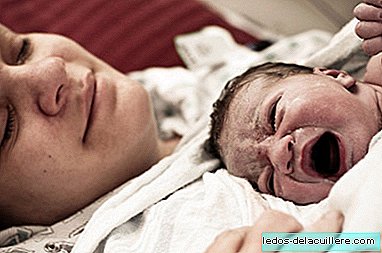
It is often believed (they make us believe) that when a baby is born before term a C-section should be performed to "avoid risks", but new studies show that vaginal delivery is safer than C-section in the case of premature delivery.
Caesarean section is a variant that should be performed when there is an inability to have a normal delivery. That the baby is born early does not prevent it, so, always evaluating pros and cons in each case, vaginal delivery should be attempted. It doesn't have to be a C-section yes or yes.
The way of birth of a premature baby is a very controversial decision for doctors, who must think about the risk for both the baby and the mother. Currently, according to the Cochrane review, "There is insufficient evidence to evaluate the use of an elective cesarean policy for the birth of a small baby". And of course the mother also has power and her decision must be taken into account.
In recent years there has been a significant increase in the rate of caesarean sections in developed countries. Even in Spain, one in three children is born by caesarean section, much more than the 15 percent acceptable by the WHO (World Health Organization).
The risk factors for premature delivery range from a mother's disease such as diabetes or preeclampsia to pregnancy complications such as premature rupture of the bag. Of course, each case is special and there are several circumstances to consider when choosing one or another type of birth such as gestational age, the presentation of the baby, the number of fetuses ... But even in cases of twin births very Preterm there is no evidence to justify an elective caesarean section policy.
Vaginal delivery safer than caesarean section
A study published in the journal Obstetrics & Gynecology has concluded that very premature babies have less trouble breathing if they are born vaginally than by caesarean section.
They analyzed more than twenty thousand births of very premature children (born between weeks 24 and 34 of gestation) and found that babies born by caesarean section were more likely to have respiratory distress than those born by vaginal delivery. Specifically, 39 versus 26 percent.
The explanation given by the researchers is that during the labor of the vaginal delivery, where the process follows a natural course, the contractions would help empty the lungs so that the baby can breathe better for the first time at birth. As a synchronization between pressure and breathing.
They also found that the results of the Apgar Test (test that is performed at five minutes to assess the general condition of the newborn) were lower in babies born by caesarean section compared to those born vaginally.
In conclusion, vaginal birth is, from every point of view, the safest way to be born. Therefore, in the light of investigations, there would be no reason to try whenever it is safe.












